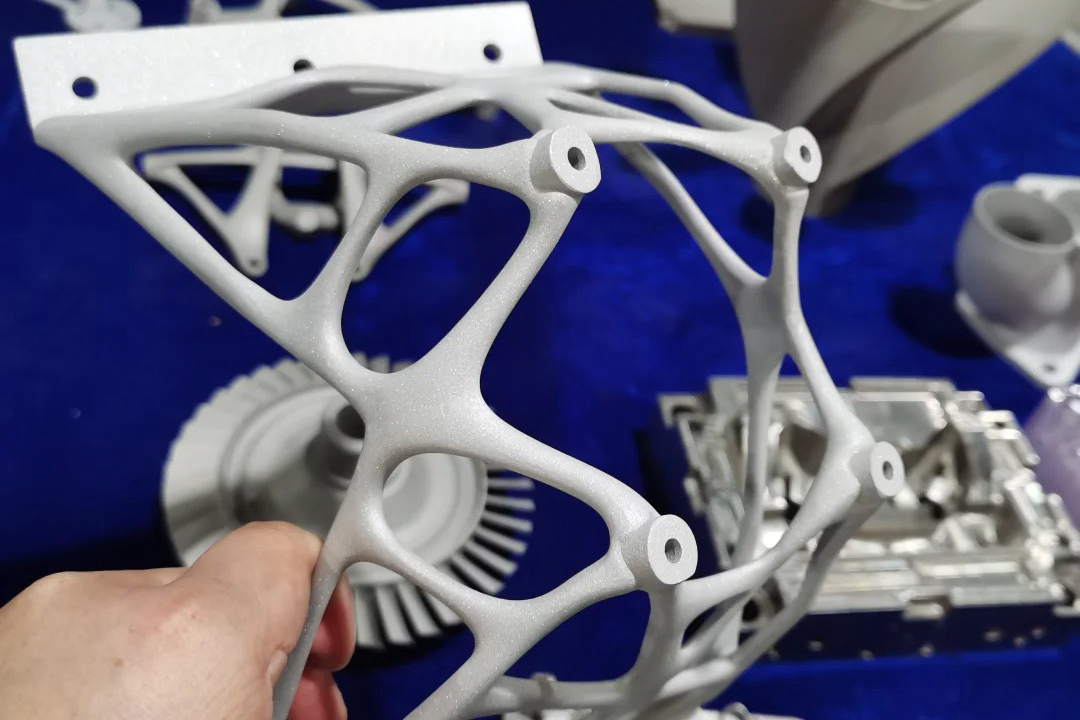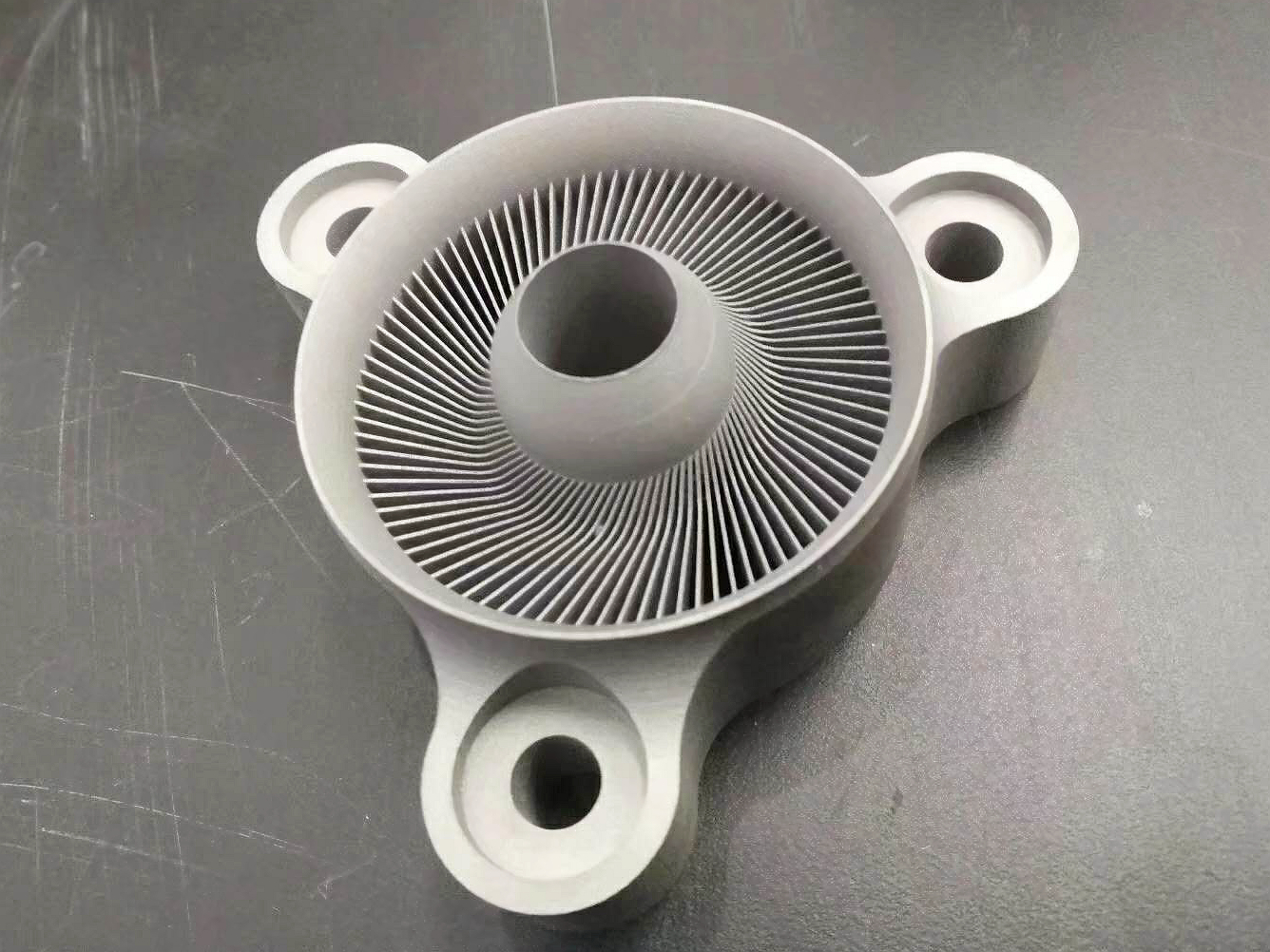Stainless Steel SUS316L
SUS316L 3D Printing Materials Introduction
Stainless Steel SUS316L is an austenitic stainless steel featuring ultra-low carbon content, excellent corrosion resistance, and high ductility. It performs reliably in acidic and chloride-rich environments, making it ideal for additive manufacturing of medical, marine, and chemical equipment.
By utilizing stainless steel 3D printing, SUS316L enables the rapid, high-precision fabrication of parts such as surgical tools, filter housings, and pressure-resistant fittings with excellent surface finish and structural integrity.
SUS316L Similar Grades Table
Country/Region | Standard | Grade or Designation |
|---|---|---|
USA | ASTM | 316L |
UNS | Unified | S31603 |
ISO | International | X2CrNiMo17-12-2 |
China | GB/T | 022Cr17Ni12Mo2 |
Germany | DIN/W.Nr. | 1.4404 |
SUS316L Comprehensive Properties Table
Category | Property | Value |
|---|---|---|
Physical Properties | Density | 7.99 g/cm³ |
Melting Point | 1370–1400°C | |
Thermal Conductivity (100°C) | 16.3 W/(m·K) | |
Electrical Resistivity | 74 µΩ·cm | |
Chemical Composition (%) | Iron (Fe) | Balance |
Chromium (Cr) | 16.0–18.0 | |
Nickel (Ni) | 10.0–14.0 | |
Molybdenum (Mo) | 2.0–3.0 | |
Carbon (C) | ≤0.03 | |
Mechanical Properties | Tensile Strength | ≥490 MPa |
Yield Strength (0.2%) | ≥170 MPa | |
Elongation at Break | ≥40% | |
Hardness (HRB) | ≤95 | |
Modulus of Elasticity | 193 GPa |
3D Printing Technology of SUS316L
SUS316L is widely processed through Selective Laser Melting (SLM), Direct Metal Laser Sintering (DMLS), and Binder Jetting, enabling near-net-shape manufacturing with excellent mechanical integrity.
Applicable Process Table
Technology | Precision | Surface Quality | Mechanical Properties | Application Suitability |
|---|---|---|---|---|
SLM | ±0.05–0.2 mm | Excellent | Excellent | Medical, Food Processing |
DMLS | ±0.05–0.2 mm | Very Good | Excellent | Marine, Instrumentation |
Binder Jetting | ±0.1–0.3 mm | Moderate | Good (post-sintered) | Chemical, Structural Parts |
SUS316L 3D Printing Process Selection Principles
For high-precision, corrosion-resistant parts, SLM provides excellent surface finish (Ra 4–10 µm) and mechanical strength with dimensional accuracy of ±0.05 mm.
DMLS offers comparable resolution and is suitable for parts requiring internal channels and fine geometries.
Binder Jetting is selected for larger parts with lower stress requirements. Final mechanical properties depend on sintering quality and part density.
SUS316L 3D Printing Key Challenges and Solutions
SUS316L exhibits warping risk due to residual stresses. HIP and optimized laser scanning strategies reduce internal stress and distortion.
Porosity can occur from improper melt pool control. Adjusting scan speeds (800–1200 mm/s) and layer thickness (~30–50 µm) helps achieve >99.8% density.
Surface roughness affects part cleanliness and sealing. Electropolishing and CNC machining enhance surface finish for critical sealing surfaces.
Oxidation during sintering in Binder Jetting must be avoided. Using a protective atmosphere such as hydrogen or argon ensures corrosion resistance and maintains metallurgical quality.
Typical Post-Processing for SUS316L 3D Printed Parts
Heat Treatment relieves internal stress and homogenizes the microstructure after metal printing. CNC Machining refines dimensions and enables high-precision tolerances for mating components and assemblies. Electropolishing enhances corrosion resistance and reduces surface roughness in biomedical or food-grade parts. Passivation removes surface iron to improve long-term resistance in chloride environments.
Industry Application Scenarios and Cases
SUS316L’s corrosion resistance, cleanliness, and biocompatibility make it widely used in:
Medical and Healthcare: Surgical instruments, bone screws, and dental components.
Marine: Pump bodies, pipe fittings, and corrosion-exposed flanges.
Chemical Processing: Filter housings, pressure vessels, and acid-handling components.
Food and Beverage: Nozzles, valves, and mixing elements requiring sanitary finish.
A case study in medical manufacturing showed 3D printed surgical guides in SUS316L with <±0.1 mm tolerance and electropolished surfaces, reducing lead time by 50% compared to traditional machining.
FAQs
What industries benefit most from 3D printing SUS316L stainless steel?
How does SUS316L compare to SUS304 in additive manufacturing?
Which post-processing techniques improve SUS316L surface quality?
What dimensional accuracy can be achieved with SUS316L 3D printing?
Is SUS316L biocompatible for surgical and dental applications?



